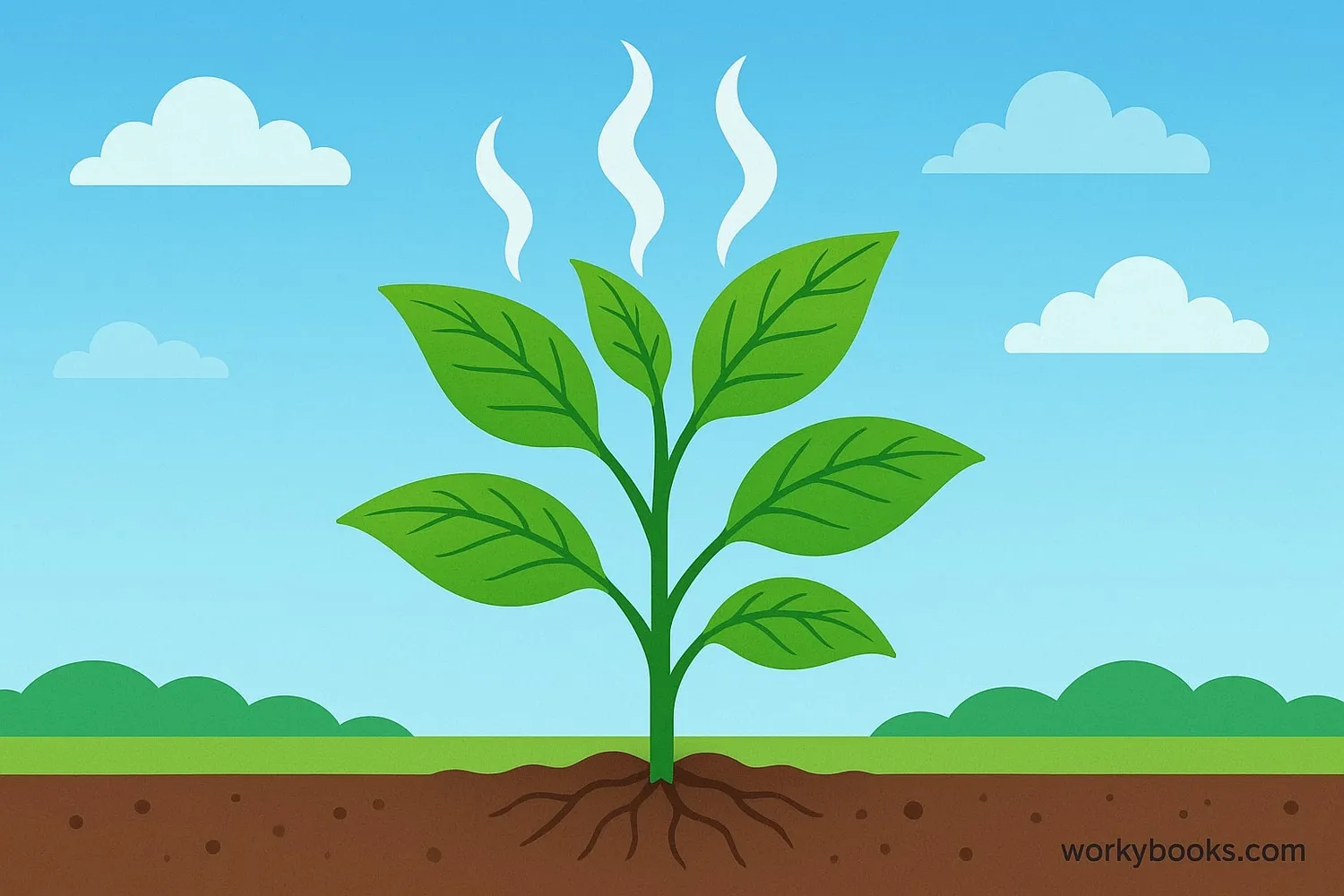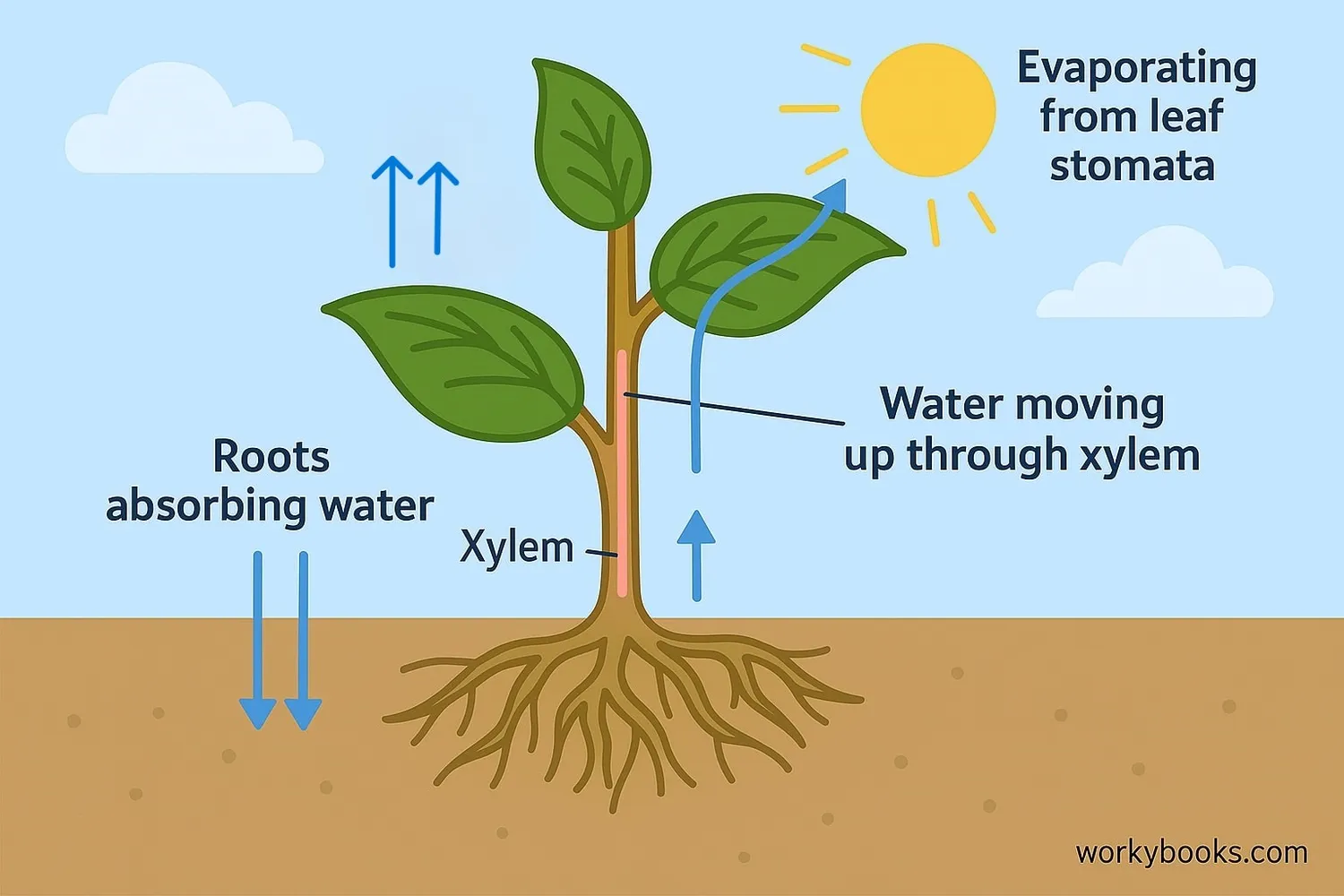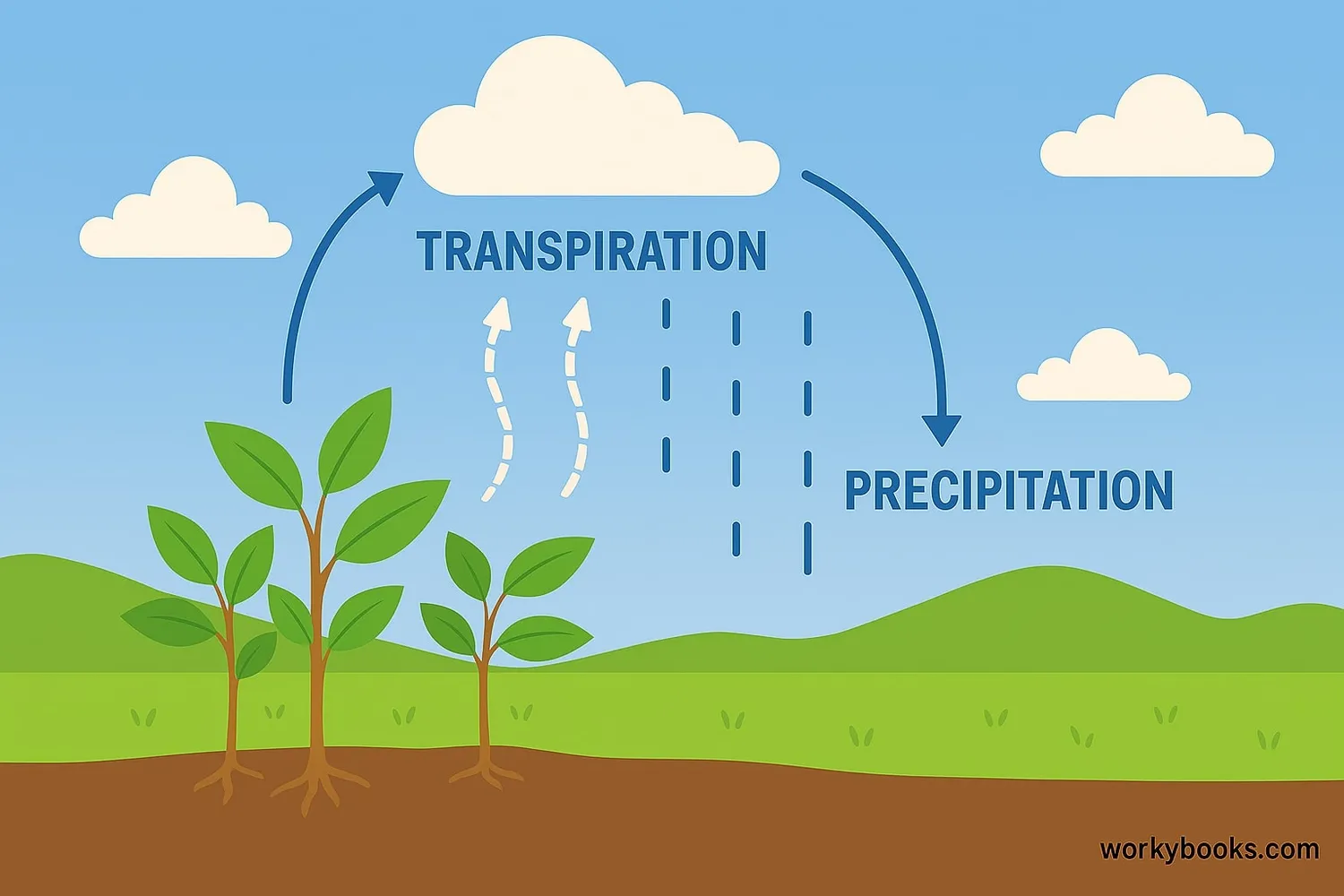Transpiration - Definition, Examples, Quiz, FAQ, Trivia
Discover how plants release water vapor through their leaves!
What is Transpiration?

Transpiration is the process where plants release water vapor into the air through their leaves. Think of it like plant sweating! Just like we sweat to cool down, plants release water through tiny openings called stomata.
Stomata (singular: stoma) are microscopic pores mostly found on the underside of leaves. They're surrounded by special cells called guard cells that open and close the stomata like little doors. When these doors open, water vapor escapes into the air.
Science Fact!
A single corn plant can transpire about 4 gallons of water during its growing season!
How Transpiration Works

Transpiration is a fascinating process that moves water through plants in a continuous flow. Here's how it works step by step:
Water Absorption
Roots absorb water from the soil
Water Transport
Water travels up through xylem tubes
Leaf Evaporation
Water evaporates from leaf surfaces
Vapor Release
Water vapor exits through stomata
Guard Cell Control
Guard cells regulate the opening and closing of stomata
Several factors affect how quickly transpiration happens:
• Temperature: Warmer temperatures increase transpiration
• Humidity: Lower humidity increases evaporation
• Wind: Breezy conditions speed up transpiration
• Light: More light means more open stomata
Guard Cells in Action!
Guard cells are like tiny gatekeepers. When they're full of water, they swell and open the stomata. When they lose water, they shrink and close the stomata!
Why Transpiration is Important

Transpiration is essential for plants and our planet! Here's why this process matters:
Plant Cooling
Helps plants regulate temperature like sweating cools humans
Water Movement
Creates a "pull" that moves water and nutrients from roots to leaves
Water Cycle
Contributes significantly to atmospheric moisture and rainfall
Without transpiration, plants couldn't:
• Stay cool on hot days
• Transport water from roots to leaves
• Absorb nutrients from the soil
• Contribute to the water cycle
Transpiration works together with photosynthesis to keep plants healthy and support life on Earth!
Plant Transpiration Quiz
Test your knowledge about plant transpiration with this quiz! Answer all 5 questions to see how much you've learned.
Frequently Asked Questions
Here are answers to some common questions about plant transpiration:
Fun Plant Transpiration Trivia
Discover some amazing facts about plant transpiration!
Tree Water Fact
A large oak tree can transpire over 40,000 gallons of water in a year! That's enough to fill a small swimming pool!
Rainforest Fact
In tropical rainforests, plants release so much water vapor that it creates its own rain clouds! This is why rainforests are so important for global weather patterns.
Desert Plant Adaptation
Cacti have adapted to reduce transpiration. They open their stomata only at night when it's cooler, and store carbon dioxide to use for photosynthesis during the day.
Water Cycle Contribution
About 10% of the moisture in the atmosphere comes from plant transpiration! The rest comes from evaporation from oceans, lakes, and rivers.


